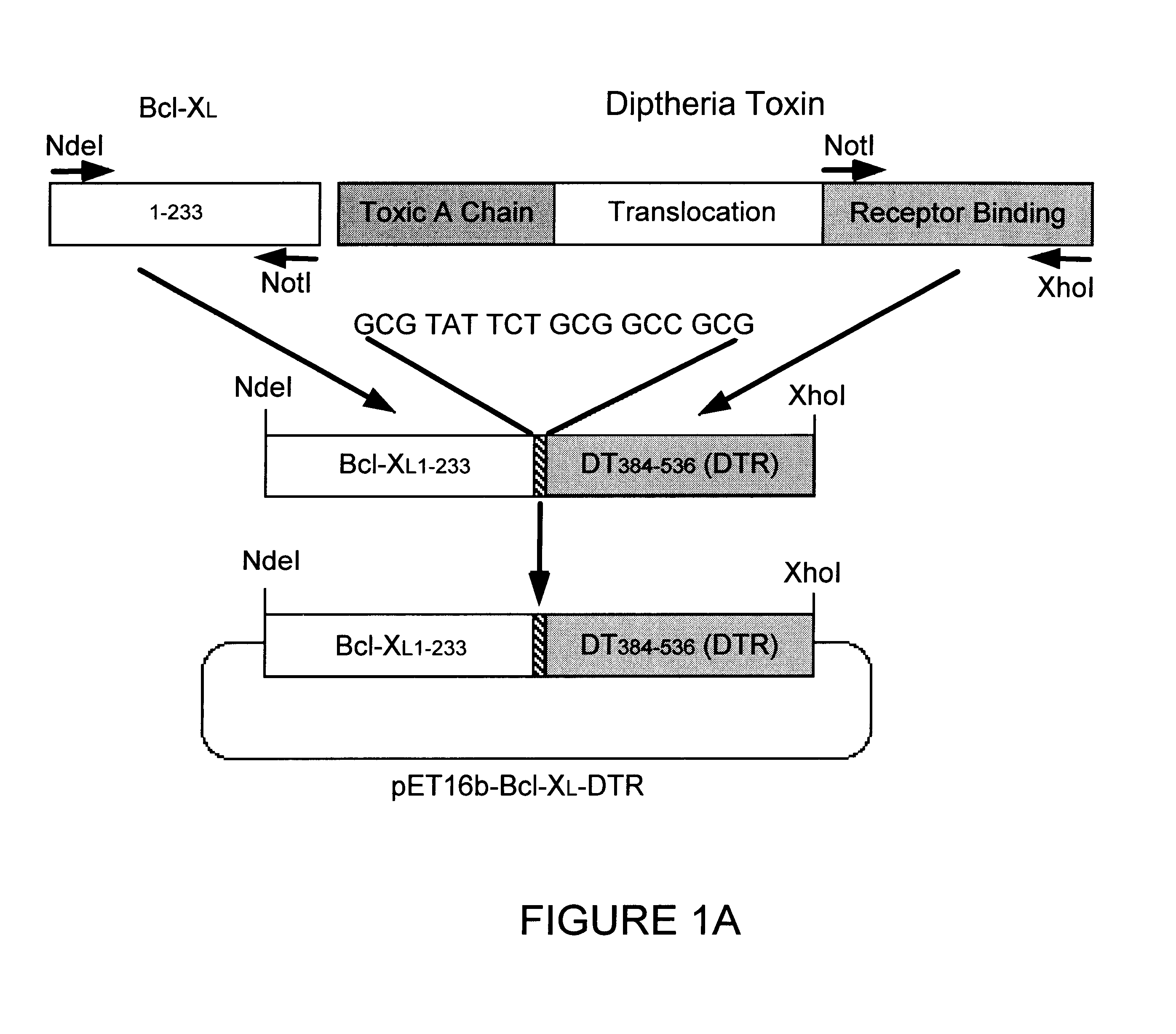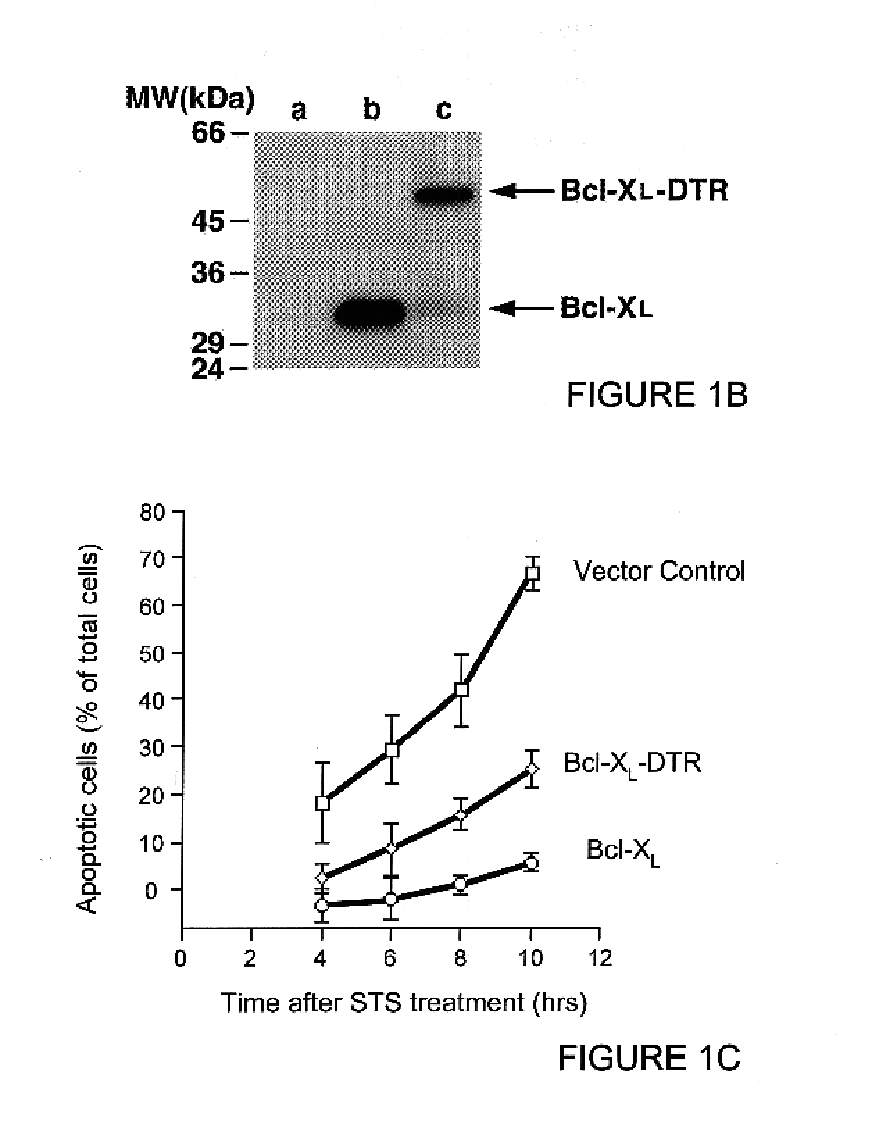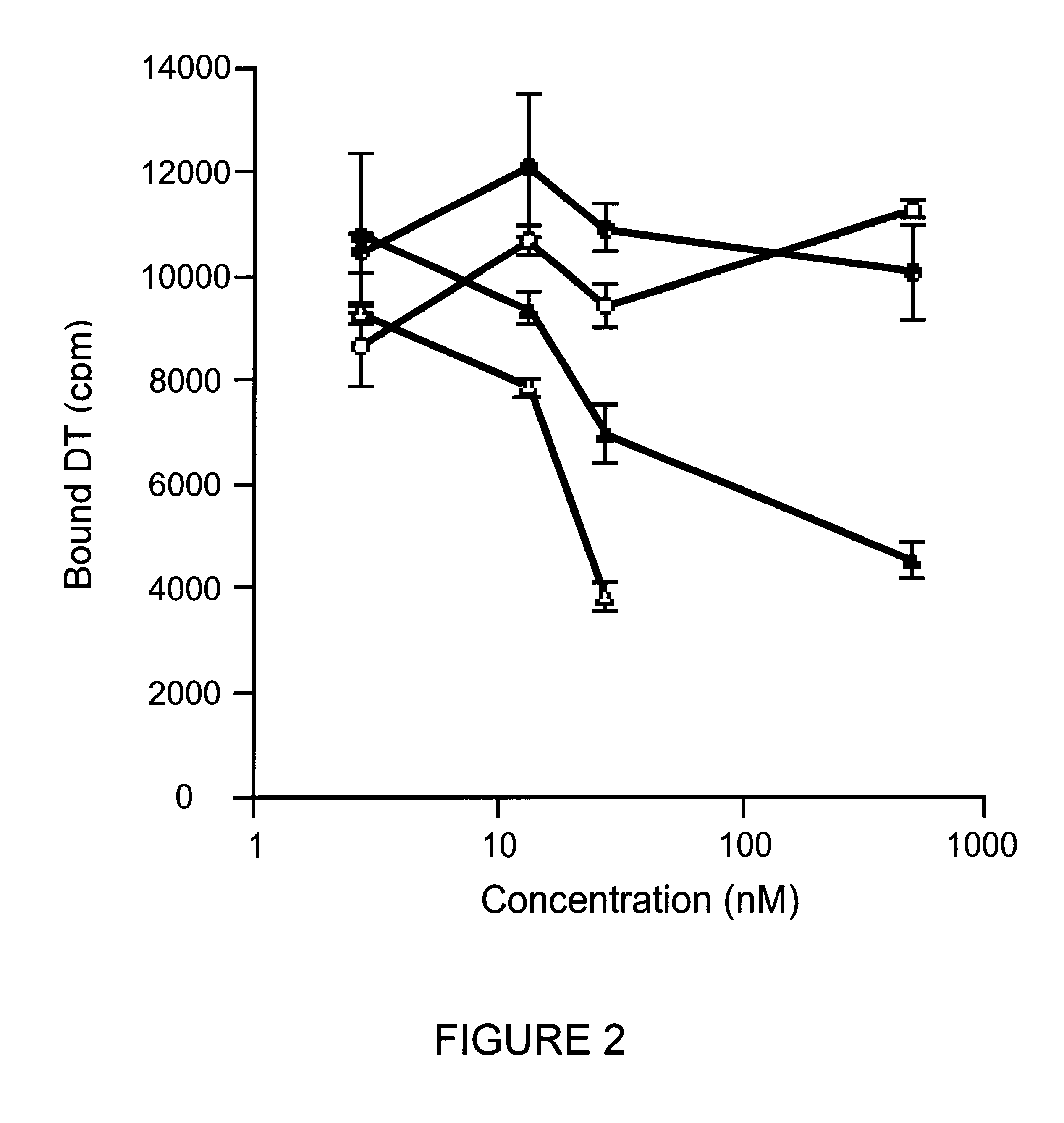Receptor-mediated uptake of an extracellular BCL-xL fusion protein inhibits apoptosis
a fusion protein and fusion protein technology, applied in the direction of peptide/protein ingredients, antibody medical ingredients, peptide sources, etc., can solve the problems of unsatisfactory clinical work, treatment with standard apoptosis inhibitory molecules, and unelucidated molecular mechanisms of apoptosis, so as to prevent cell death. the effect of the consequences
- Summary
- Abstract
- Description
- Claims
- Application Information
AI Technical Summary
Benefits of technology
Problems solved by technology
Method used
Image
Examples
example 2
Expression and Purification of Functional Apoptosis-modifying Fusion Proteins
To produce proteins for extracellular addition to cells, the Bcl-xi gene, the DTR domain gene and the Bcl-x.sub.L -DTR fusion gene were cloned into pET16b. E. coli BL2 1 (DE3) strain was used to express Bcl-x.sub.L -DTR, Bad-DTTR, Bcl-x.sub.L and DTR, with addition of 1 mM IPTG when the OD260 reached 0.5-0.7. After two hours incubation and lysis by French press the inclusion bodies were collected and dissolved in 6M guanidine-HCl.
B. Eukaryotic Expression
Transfection of HeLa cells with the fusion constructs was performed as reported previously (Wolter et al., J Cell Biol 139:1281-1292, 1997). HeLa cells were harvested and lysed in 1 ml buffer containing 100 .mu. / ml leupeptin 20 hours after transfection, centrifuged to remove cell debris, and 15 .mu.l aliquots of the supernatant loaded onto 10-20% SDS-PAGE. The plasmid encoded proteins were visualized by immunoblotting with anti-Bcl-x...
example 3
Assays for Measuring Fusion Protein Binding to, and Translocation Into, Target Cells
Protein binding to the diphtheria toxin receptor was performed as previously reported (Greenfield et al, Science 238:536-539, 1987) with the following modifications. DT was radiolabeled with I.sup.125 using iodobeads (Pierce Chem. Co., Rockford, Ill.) as described by the manufacturer. Cos-7 cells, grown to confluency in 12 well costar plates, were analyzed for receptor binding and competition by incubation for three hours on ice. Results are reported in FIG. 2. Cold competitor proteins, native DT (.DELTA.), Bcl-x.sub.L -DTR (.tangle-solidup.), Bcl-x.sub.L (.smallcircle.), and DTR (.circle-solid.), were used to displace I.sup.125 labeled DT tracer.
Native DT and Bcl-x.sub.L -DTR compete for DT receptor binding in the nanomolar concentration range. DT and the Bcl-x.sub.L -DTR fusion protein competed for I.sup.125 -DT binding to its receptor to a similar extent although the af...
example 4
Measurement of Bcl-x.sub.L -DTR Apoptosis-inhibiting Activity
A. Apoptosis Inhibition After Transient Cell Transfection
To demonstrate that Bcl-x.sub.L -DTR is effective at inhibiting apoptosis when expressed from within the target cell, this construct and the control construct containing Bcl-x.sub.L were transiently transfected into HeLa cells. Assay of apoptosis inhibition after transient transfection was performed as reported previously (Wolter et al., J. Cell Biol. 139:1281-1292, 1997). The Bcl-x.sub.L -DTR fusion gene blocked apoptosis after transient transfection into HeLa cells (FIG. 1C) to an extent similar to that of the Bcl-x.sub.L gene after C-terminal tail truncation (Wolter et al., J Cell Biol 139:1281-1292, 1997).
B. Inhibition of STS-induced Apoptosis by Extracellular Treatment With Bcl-x.sub.L -DTR
Hoechst dye no. 33342 staining: The effectiveness of extracellular delivery of Bcl-x.sub.L or the Bcl-x.sub.L -DTR fusion protein for inhibiting the rate of cell death by apop...
PUM
| Property | Measurement | Unit |
|---|---|---|
| Molar density | aaaaa | aaaaa |
| Fraction | aaaaa | aaaaa |
| Fraction | aaaaa | aaaaa |
Abstract
Description
Claims
Application Information
 Login to View More
Login to View More - R&D
- Intellectual Property
- Life Sciences
- Materials
- Tech Scout
- Unparalleled Data Quality
- Higher Quality Content
- 60% Fewer Hallucinations
Browse by: Latest US Patents, China's latest patents, Technical Efficacy Thesaurus, Application Domain, Technology Topic, Popular Technical Reports.
© 2025 PatSnap. All rights reserved.Legal|Privacy policy|Modern Slavery Act Transparency Statement|Sitemap|About US| Contact US: help@patsnap.com



